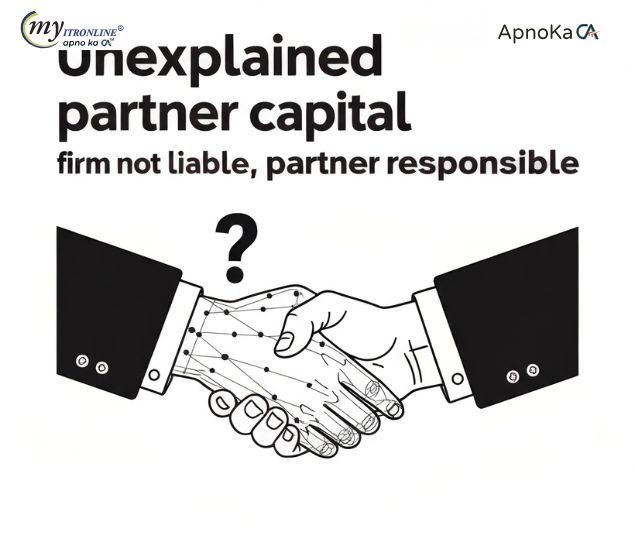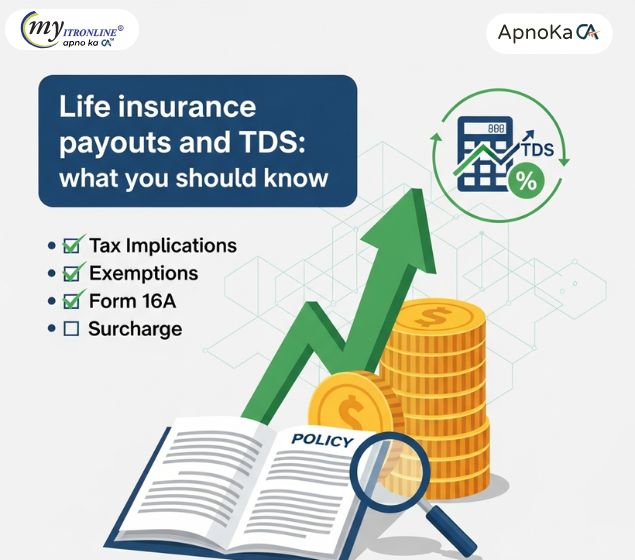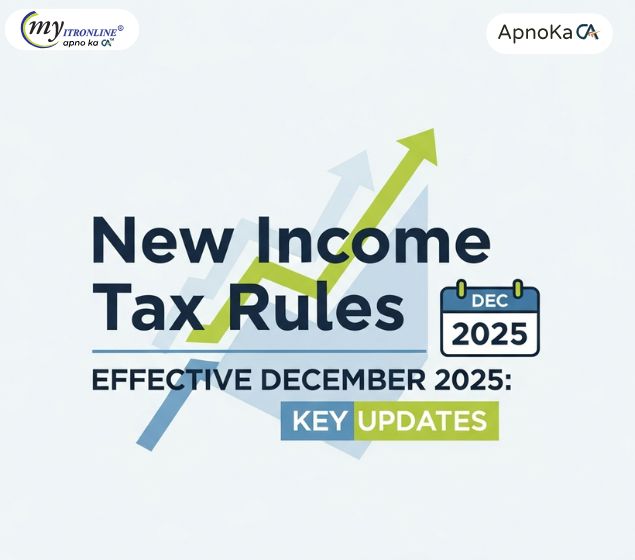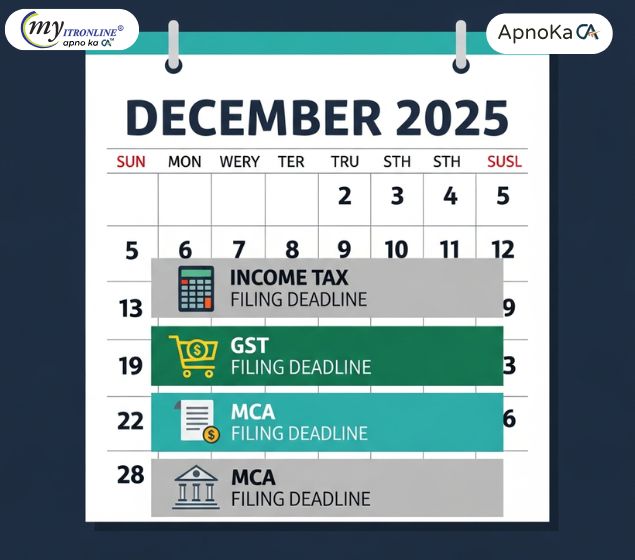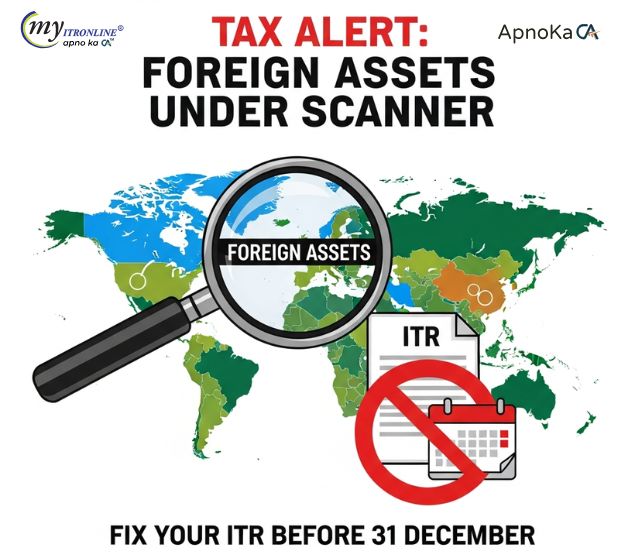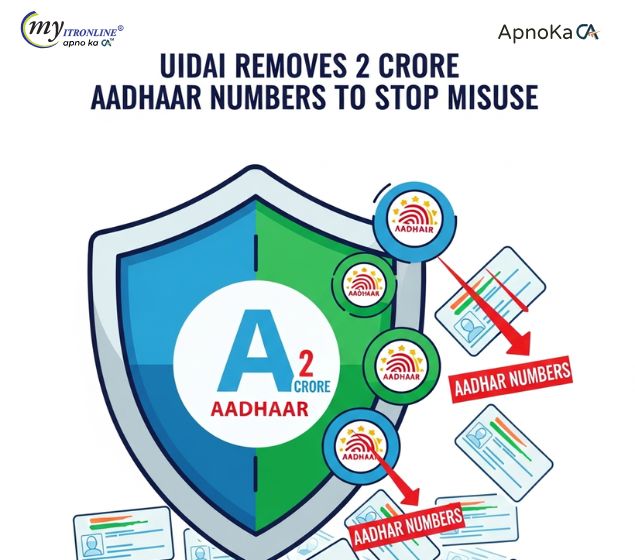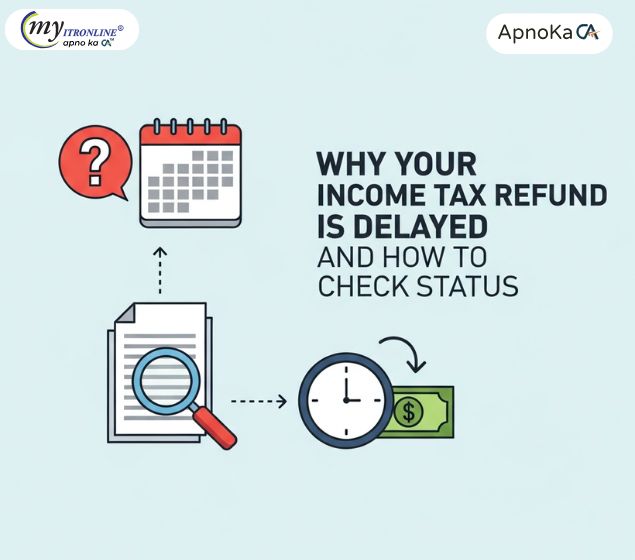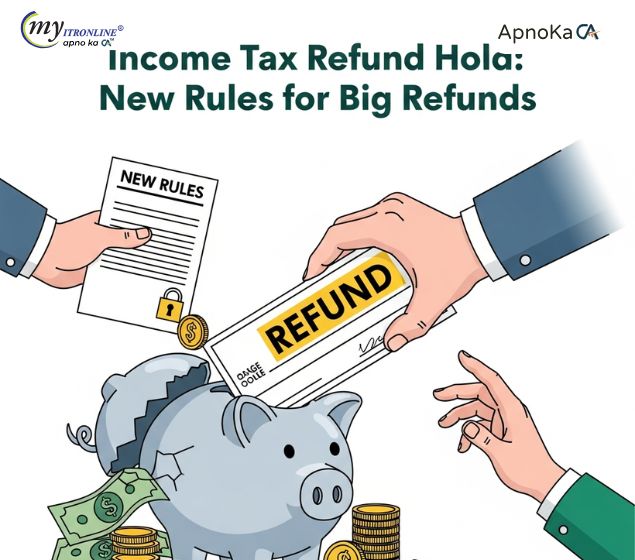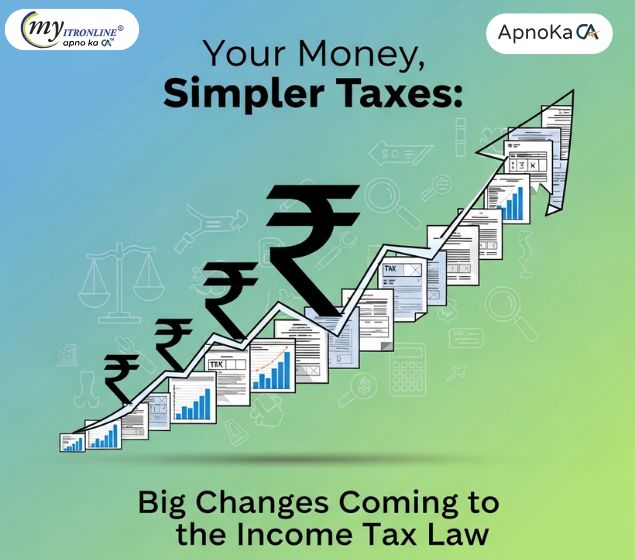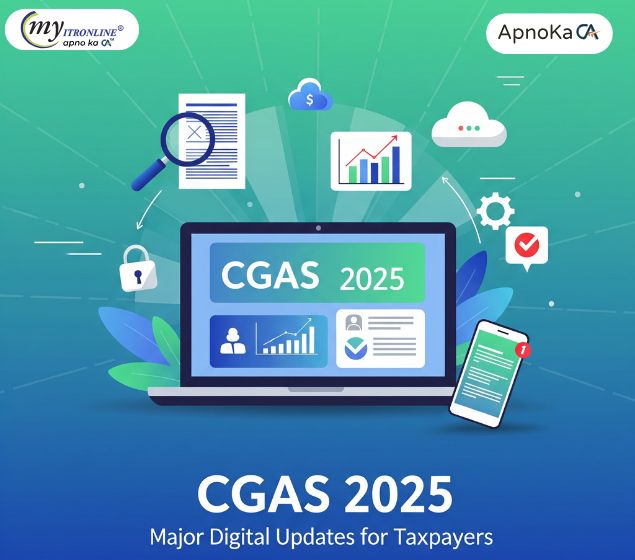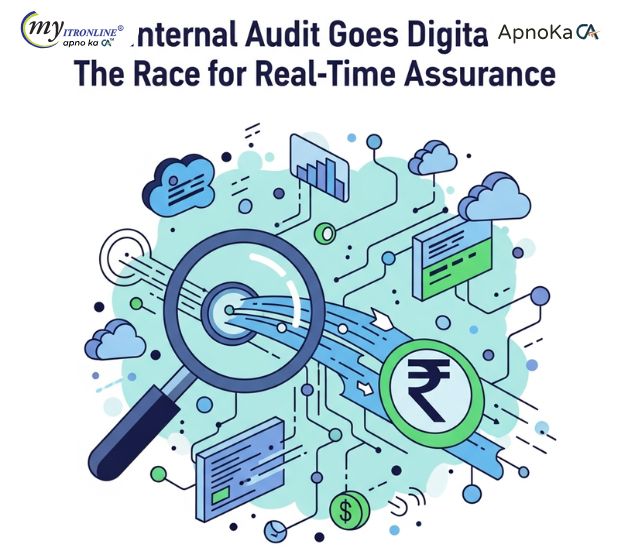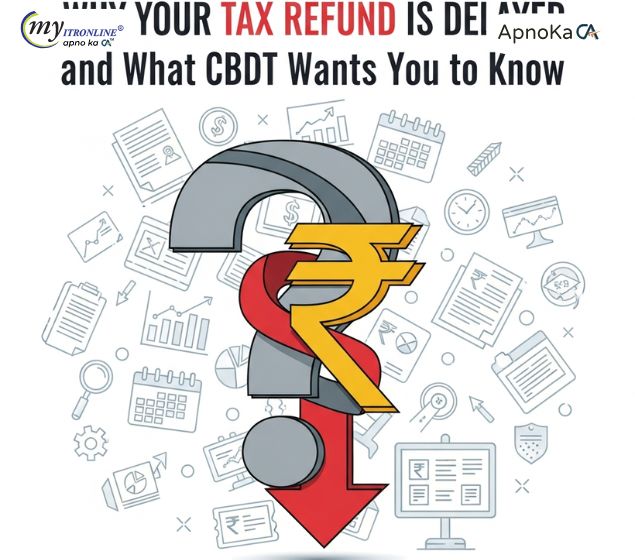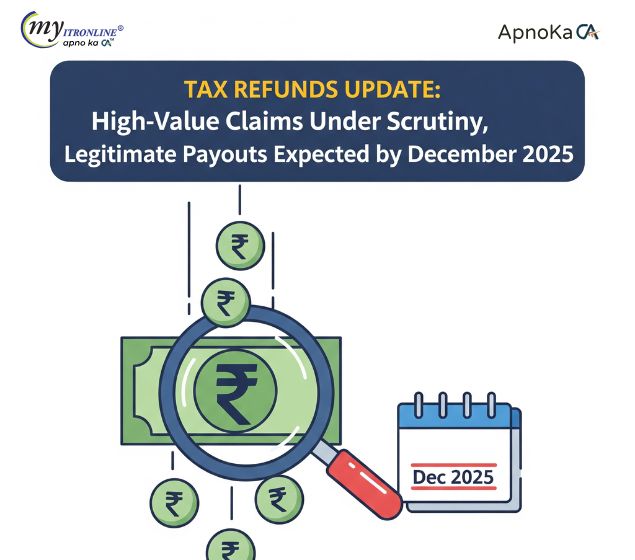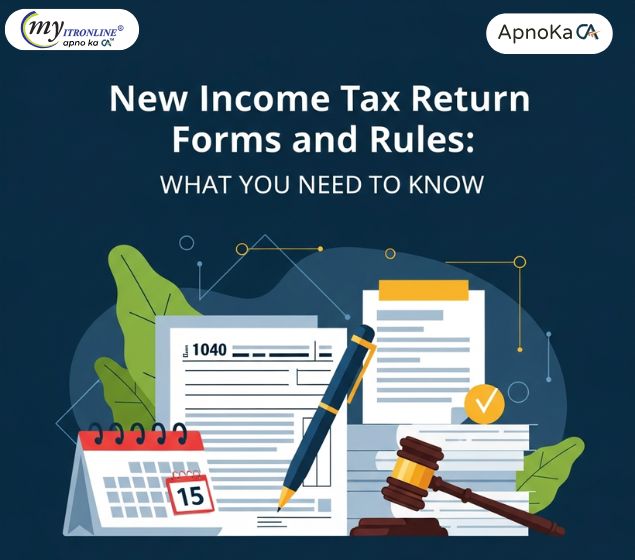Understanding TDS on Property Deals and Rent Payments
This blog post offers a clear comparison of four important TDS sections related to property and rental income in India: 194I, 194-IA, 194-IB, and 194-IC. It explains each section's nature of payment, payer, payee, threshold limits, TDS rates (including recent changes for 194-IB and 194I for FY 2025-26), time of deduction, required forms, and TAN requirements. The post also discusses the connections between these sections, compliance issues, and best practices for individuals, businesses, and developers to manage the TDS landscape effectively and avoid penalties.
.jpg )
Tax Deducted at Source (TDS) is an essential part of the Indian Income Tax Act. It collects taxes right when income is generated, ensuring a steady revenue stream for the government and expanding the tax base. The idea behind TDS is simple. A payer deducts a part of the payment and sends it to the government. However, how TDS applies can differ greatly across various transactions.
This blog offers a detailed comparison of four important TDS sections related to property and rent: 194I, 194-IA, 194-IB, and 194-IC. It's crucial for individuals, businesses, and developers to understand these rules to ensure compliance and avoid penalties.
Understanding the Landscape: An Overview
Before we look into the details, let’s briefly introduce each section:
- Section 194I: TDS on Rent (General Provision) - This section addresses TDS on rent payments for different assets.
- Section 194-IA: TDS on Transfer of Immovable Property - This section focuses on TDS on the sale of immovable property.
- Section 194-IB: TDS on Rent by Individuals/HUFs (Not liable to audit) - This section offers a simpler provision for individuals and HUFs paying significant rent.
- Section 194-IC: TDS on Payments under Joint Development Agreements (JDAs) - This section deals with tax implications for payments in joint development projects.
Detailed Comparison and Analysis
Let's break down each section based on key parameters:
| Feature | Section 194I: TDS on Rent | Section 194-IA: TDS on Immovable Property | Section 194-IB: TDS on Rent by Individuals/HUFs (Not Liable to Audit) | Section 194-IC: TDS on Joint Development Agreements (JDAs) |
|---|---|---|---|---|
| Nature of Payment | Rent for: - Land - Building (including factory building) - Land appurtenant to building - Machinery - Plant - Equipment - Furniture - Fittings |
Consideration for transfer of any immovable property (other than agricultural land) | Rent for use of land, building (including factory building), or both, for residential or commercial purposes. | Monetary consideration paid by a developer to a landowner under a Joint Development Agreement (JDA). |
| Payer (Deductor) | Any person (other than individuals or HUFs not liable to tax audit under Section 44AB). Individuals/HUFs liable to audit under Section 44AB are also included. | Buyer of the immovable property. | Individual or HUF (not liable to audit under Section 44AB). | Developer or any person making a monetary payment under JDA. |
| Payee (Deductee) | Resident Landlord | Resident Seller | Resident Landlord | Resident Landowner |
| Threshold Limit | Annual rent exceeding ₹ 2,40,000 (from FY 2020-21 onwards). This limit increases to ₹ 6,00,000 from FY 2025-26. | Consideration for immovable property of ₹ 50 Lakhs or more. | Monthly rent exceeding ₹ 50,000. | No minimum threshold limit. TDS applies to any monetary payment under a JDA. |
| TDS Rate | - 2% for plant, machinery, or equipment - 10% for land, building, furniture, or fittings |
1% of the sale consideration. | 5% of the total rental amount (this will reduce to 2% from Oct 1, 2024). | 10% of the monetary payment. |
| Higher TDS (No PAN) | 20% if PAN is not provided (as per Section 206AA). | 20% if PAN is not provided (as per Section 206AA). | 20% if PAN is not provided (as per Section 206AA), but not exceeding the rent for the last month. | 20% if PAN is not provided (as per Section 206AA). |
| Time of Deduction | Earlier of: - Credit of rent to payee's account - Actual payment (cash, cheque, draft, etc.) |
Earlier of: - Credit of consideration to seller's account - Actual payment (including installments) |
Earlier of: - Credit of rent for the last month of the financial year or last month of tenancy (if vacated earlier) to landlord's account - Actual payment (cash, cheque, draft, etc.) |
Earlier of: - Credit of sum to payee's account - Actual payment (cash, cheque, draft, etc.) |
| Form for Deposit | Challan ITNS 281 | Challan-cum-statement in Form 26QB | Challan-cum-statement in Form 26QC | Challan ITNS 281 |
| TDS Certificate | Form 16A | Form 16B (issued by buyer to seller) | Form 16C (issued by tenant to landlord) | Form 16A |
| TAN Requirement | Yes, required for the deductor. | No, TAN not required for the buyer. | No, TAN not required for the deductor. | No, TAN not required for the deductor. |
| Key Exceptions/Notes | - No TDS on refundable security deposits. - Payments for regular hotel accommodations under agreements attract TDS. |
- Applies to urban agricultural land. - Includes all charges incidental to transfer (club membership, car parking, electricity, maintenance, etc.) from Sep 1, 2019. |
- This section simplifies compliance for individuals/HUFs not subject to tax audit. - Deducted once annually (at the end of the year or tenancy). |
- Applies only to monetary consideration. Consideration in kind (e.g., share of constructed units) is not subject to TDS under this section. - If the landowner is an NRI, Section 195 applies instead of 194IC. |
Analysis and Interplay
Scope and Applicability:
- 194I is the broadest section, covering various types of rent payments made by businesses and audited individuals/HUFs. It makes sure that significant rental income from commercial and certain residential arrangements is taxed.
- 194-IA is specifically for one-time transactions of high-value properties. It puts the responsibility of deduction on the buyer, who is often new to the tax deduction system for that transaction.
- 194-IB was created to cover a large group of individual and HUF tenants who previously didn’t fall under the TDS requirement due to not being subject to tax audits under Section 44AB. It aims to increase the tax base for residential rental income. The reduction in the rate from 5% to 2% (starting Oct 1, 2024) is a significant change meant to ease compliance and lessen the financial burden on tenants.
- 194-IC addresses the distinct nature of Joint Development Agreements in real estate. It ensures that landowners receive monetary consideration and that taxes are collected at the source on these payments, preventing tax evasion in complex real estate deals.
Deductor Responsibility & TAN:
- A major difference is the requirement of a Tax Deduction and Collection Account Number (TAN). For Sections 194-IA, 194-IB, and 194-IC, the deductor (buyer, tenant, developer) does not need a TAN. This helps simplify compliance for these taxpayers, who may not frequently engage in TDS activities.
- For 194I, a TAN is usually required. This shows that the deductors under this section are often businesses or individuals/HUFs with larger operations and a more structured accounting system.
Thresholds and Rates:
- The thresholds differ widely. While 194I has an annual threshold, 194-IA has a specific transaction threshold, and 194-IB uses a monthly threshold to capture high-value residential rents.
- 194-IC stands out because there’s no threshold. This means even small payments under JDAs are subject to TDS, showing the government’s emphasis on taxing these agreements.
- The TDS rates also vary based on the income type and the expected ease of compliance.
Compliance Forms:
- The introduction of specific challan-cum-statement forms like Form 26QB (for 194-IA) and Form 26QC (for 194-IB) makes the process easier for individuals and non-TAN holders, streamlining online payment and filing.
Consequences of Non-Compliance:
- In all sections, failing to deduct or deposit TDS on time can result in interest and penalties. The interest for late deduction is usually 1% per month, while late deposit after deduction incurs 1.5% per month. Penalties for late filing of statements (e.g. Form 26QB/26QC) can also be high (₹ 200 per day).
Practical Implications and Best Practices
- For Tenants (Individual/HUF): If your monthly rent exceeds ₹ 50,000, be sure to learn about Section 194-IB. Make sure to deduct TDS and deposit it using Form 26QC, and provide Form 16C to your landlord.
- For Property Buyers: Always deduct 1% TDS on property purchases over ₹ 50 Lakhs from a resident seller using Form 26QB. Get the seller's PAN to avoid the higher 20% TDS rate.
- For Businesses/Audited Individuals/HUFs paying Rent: Follow Section 194I and understand the different rates for various assets. Keep proper records and a TAN.
- For Developers/Landowners in JDAs: Know about Section 194-IC. Developers must deduct 10% TDS on any payment made to the landowner. Landowners should ensure they receive Form 16A as proof of TDS.
Conclusion
Sections 194I, 194-IA, 194-IB, and 194-IC show the Income Tax Department's thorough approach to collecting tax on property and rental transactions. Each section serves a specific purpose and applies to different scenarios, but they all share the principle of collecting taxes at the source. By understanding these rules, taxpayers can comply, avoid penalties, and contribute effectively to the tax system. Always consult a tax professional for specific advice suited to your situation.
FILING YOUR INCOME TAX RETURN F.Y 2024-25 (A.Y. 2025-2026) WITH MYITRONLINE
The income tax filing deadline is right around the corner. If you haven’t filed yet, do it today with Myitronline! Avoid last minute rush and file your tax return today on MYITRONLINE in Just 5 mins.(www.myitronline.com)
If you are looking for eCA assistance to file your income tax return/ GST, you can opt for MYITRONLINE eCA assisted plan starting
Upload Salary Individual Form-16
If you have any questions with filing your tax return, please reply to this mail. info@myitronline.com OR call 9971055886,8130309886.
Note-All the aforementioned information in the article is taken from authentic resources and has been published after moderation. Any change in the information other than fact must be believed as a human error. For queries mail us at marketing@myitronline.com
Krishna Gopal Varshney
An editor at apnokacaKrishna Gopal Varshney, Founder & CEO of Myitronline Global Services Private Limited at Delhi. A dedicated and tireless Expert Service Provider for the clients seeking tax filing assistance and all other essential requirements associated with Business/Professional establishment. Connect to us and let us give the Best Support to make you a Success. Visit our website for latest Business News and IT Updates.
Leave a reply
Your email address will not be published. Required fields are marked *Share this article
Krishna Gopal Varshney, Founder & CEO of Myitronline Global Services Private Limited at Delhi. A dedicated and tireless Expert Service Provider for the clients seeking tax filing assistance and all other essential requirements associated with Business/Professional establishment. Connect to us and let us give the Best Support to make you a Success. Visit our website for latest Business News and IT Updates.
View articles








